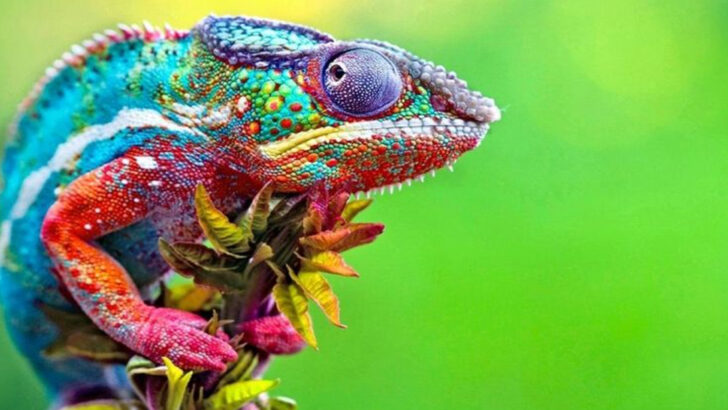Some animals look too bright, too bold, and too perfect to be real—but they are. Their colors don’t just pop—they explode. Neon blues, fiery oranges, electric greens. It’s like nature grabbed a paintbrush and lost all restraint. From birds that shimmer like jewels to insects that glow like neon signs, these creatures don’t blend in. They stand out. And they make you question your eyes. Here are 11 stunning animals so wildly colorful, you’ll swear someone edited them—until they move.
Mandarin Duck
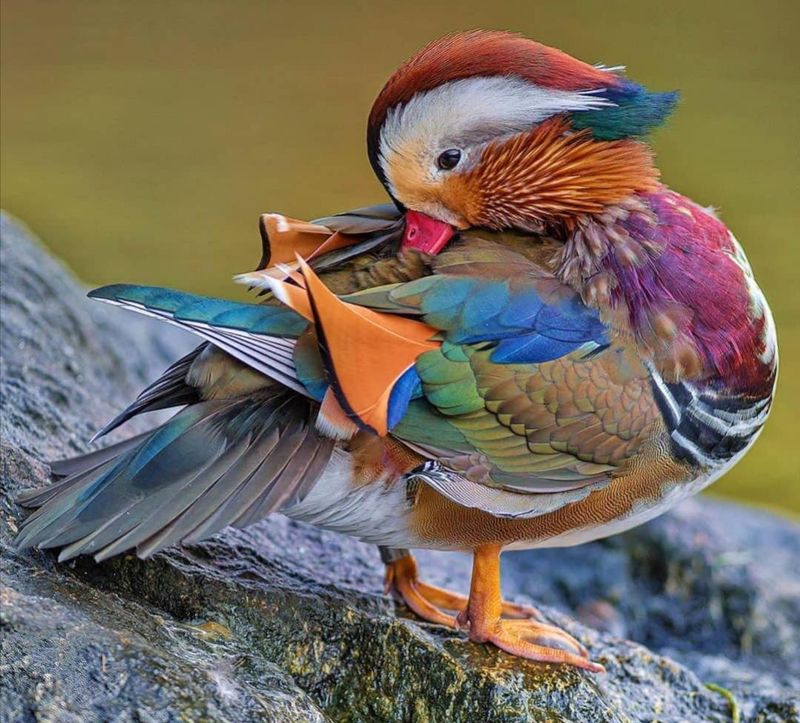
The Mandarin Duck, with its dazzling array of colors, appears as if painted by an artist. Its plumage boasts vivid oranges, blues, and greens, making it a spectacle on any water body. In China, this duck symbolizes love and fidelity.
Much admired in East Asian cultures, its beauty is unmatched in the avian world. The male’s flamboyant appearance contrasts with the female’s subdued tones, creating a striking pair.
A sighting in the wild is always a special occasion, offering a glimpse into nature’s artistic prowess.
Peacock Spider
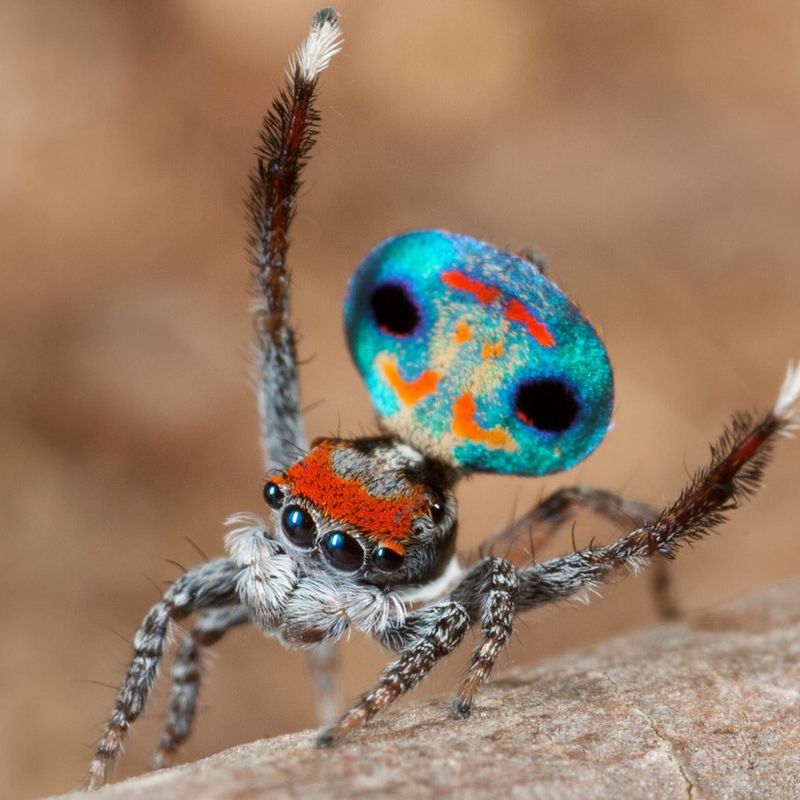
Peacock Spiders are tiny arachnids with a flair for the dramatic. These Australian natives perform intricate dances, flaunting their vibrant color patterns to attract mates. Their iridescent blues and reds create a jewel-like effect.
Despite their small size, they’re captivating performers in the arachnid world. During courtship, the male raises its abdomen and legs, creating a fan-like display.
Their unique performances and striking appearances make them a favorite among nature enthusiasts.
Mandrill
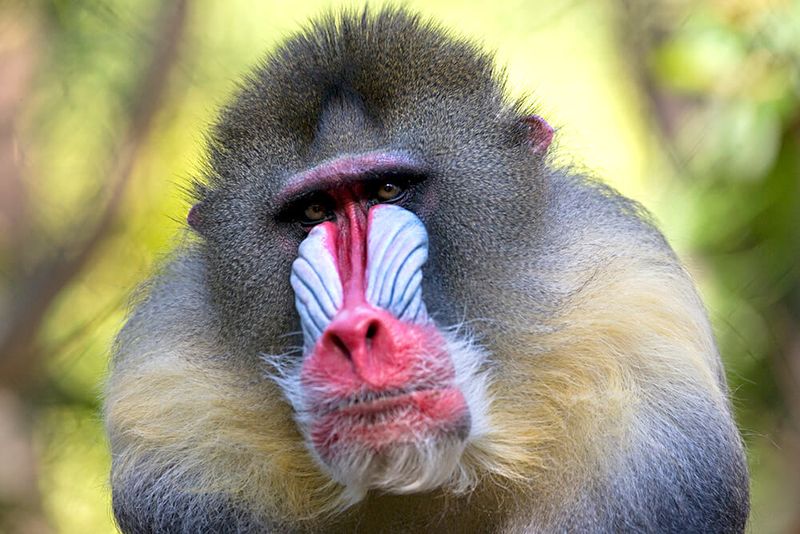
Mandrills, known for their vibrant facial hues, are one of the world’s most colorful mammals. Their intense blue and red facial stripes are unique identifiers. This primate’s expressive face is a canvas of nature’s boldest colors.
Residing in Central African rainforests, mandrills are social creatures, often seen in large troops. Their expressive eyes and faces are captivating.
These primates communicate through a complex system of facial expressions, making them fascinating subjects for observation.
Lilac-breasted Roller
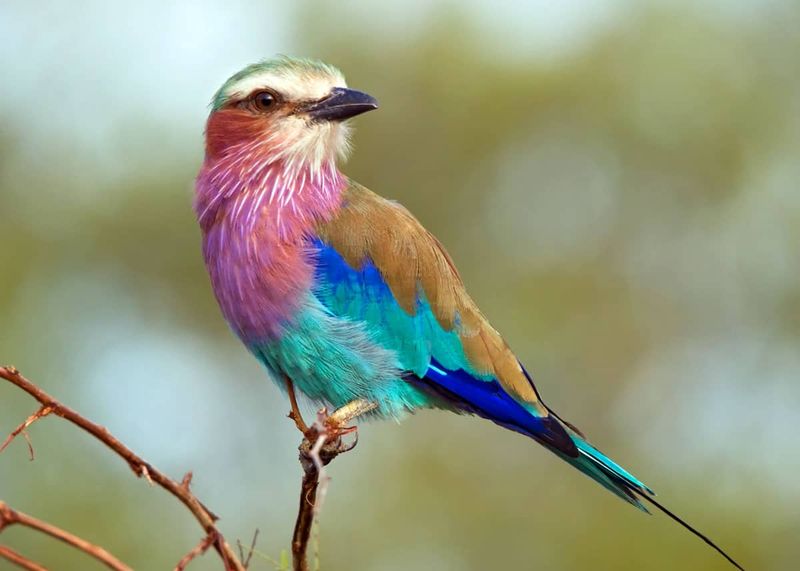
The Lilac-breasted Roller is a bird that captivates with its remarkable hues. Found across sub-Saharan Africa, its lilac throat blends seamlessly into blues and greens.
Often perched on trees, it provides a burst of color against the savanna landscape. Its flight is a spectacle, revealing hidden shades beneath its wings.
The roller is not just a visual treat; its acrobatic flight patterns are equally mesmerizing, making it a favorite among bird watchers.
Poison Dart Frog
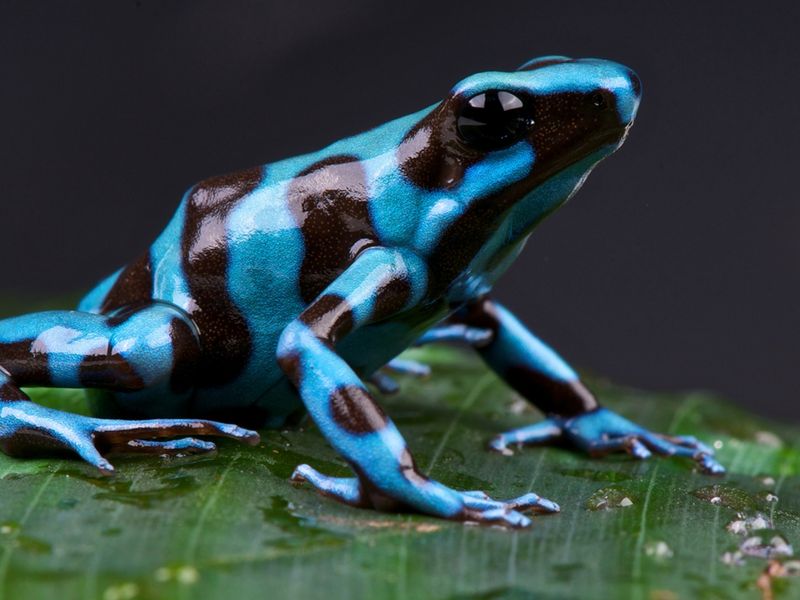
The Poison Dart Frog is a tiny amphibian with a mighty presence. Its vivid colors, ranging from bright blues to striking yellows and reds, are a natural warning sign.
These frogs, native to Central and South American rainforests, contain potent toxins as a defense mechanism. Their small size belies their deadly potential.
Despite their toxicity, they play a vital role in their ecosystems, controlling insect populations. Their vibrant appearance continues to fascinate herpetologists worldwide.
Resplendent Quetzal
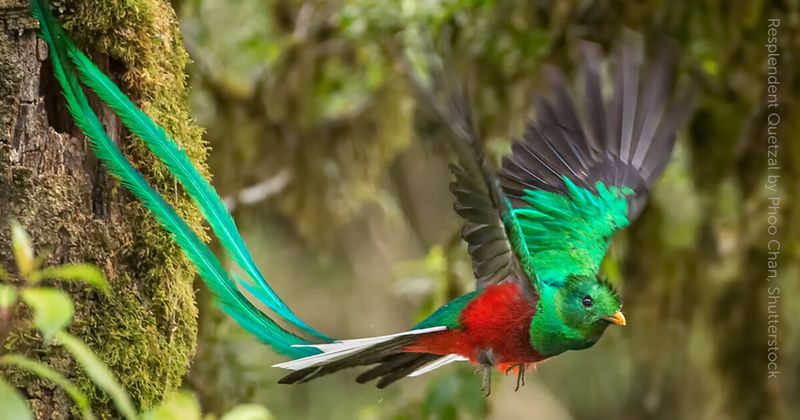
The Resplendent Quetzal is a symbol of freedom and beauty in the lush cloud forests of Central America. Its shimmering green plumage, contrasted by a bright red breast, is truly enchanting.
This bird has significant cultural importance in Mesoamerica, often associated with gods and legends. Its elusive nature makes sightings rare but rewarding.
The quetzal’s splendid appearance and its graceful flight have made it a legendary figure in avian lore, capturing the imagination of many.
Rainbow Lorikeet
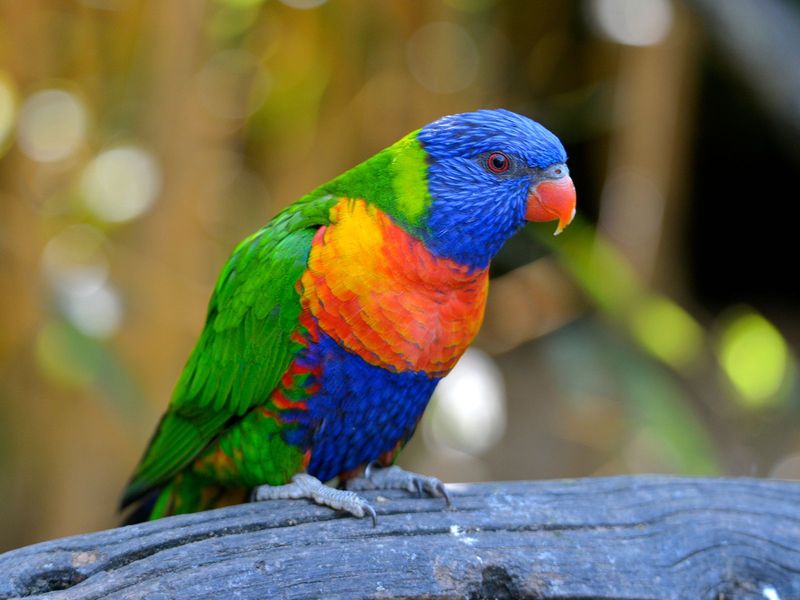
The Rainbow Lorikeet is Australia’s feathered kaleidoscope. This parrot’s plumage is a vivid blend of reds, blues, greens, and yellows, creating a living rainbow.
Known for their playful nature, these birds are often seen in flocks, causing a riot of color in the skies. Their cheerful chatter adds to their lively presence.
They’re not just visual delights; their sociability makes them charming pets, although they thrive best in the wild.
Clownfish

Clownfish, immortalized by movies, are as enchanting as their on-screen portrayals. Their bold orange bodies with white bands are instantly recognizable.
These fish share a symbiotic relationship with sea anemones, finding shelter among their stinging tentacles. This partnership is a marvel of marine biology.
Living in warm tropical waters, these fish are hardy survivors and vibrant additions to coral reefs worldwide.
Blue Morpho Butterfly
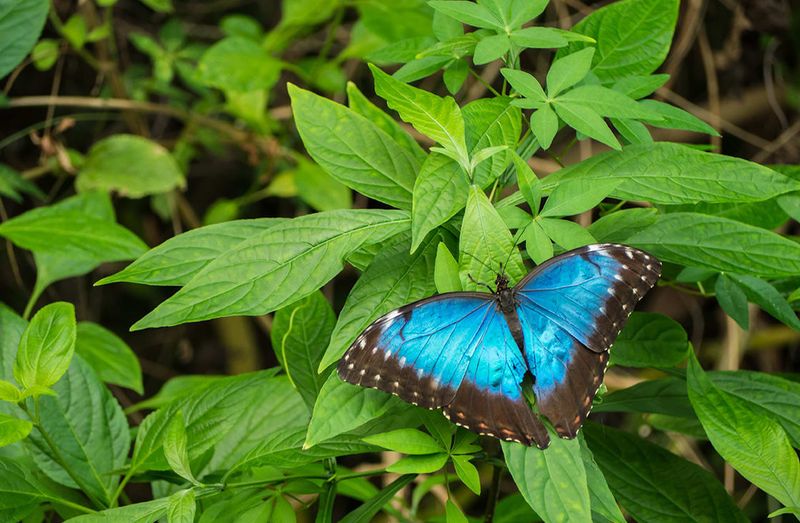
The Blue Morpho Butterfly, with its iridescent blue wings, is a highlight of any rainforest. Its shimmering colors are not from pigments but microscopic scales.
This butterfly’s wings flash a brilliant blue as it flits through the forest, creating an optical illusion that confounds predators. Their beauty is both a defense and a spectacle.
Their flight through the dense foliage is a mesmerizing dance, a fleeting but memorable encounter in the wild.
Chameleon
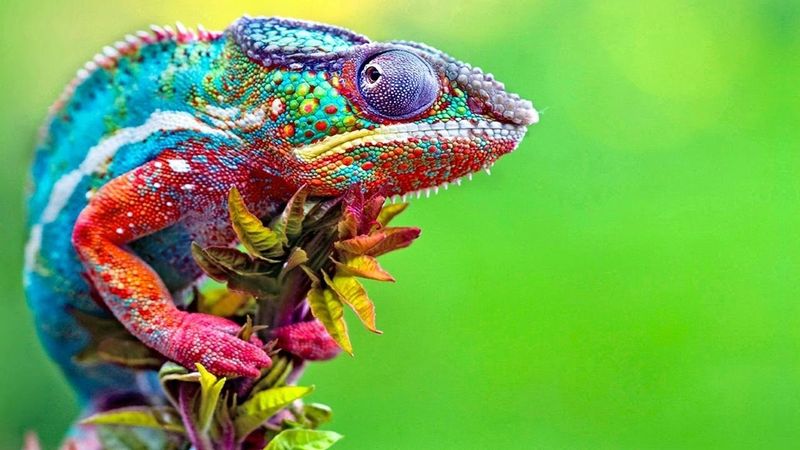
Chameleons are nature’s color-changing wonders. Their ability to shift skin colors is a marvel, used for communication and camouflage.
Found in Africa and Madagascar, these reptiles blend seamlessly with their environments. Their independent eye movement adds to their mystique.
Their dynamic color spectrum and dexterous tongues make them fascinating subjects of study for biologists.
Flamingo
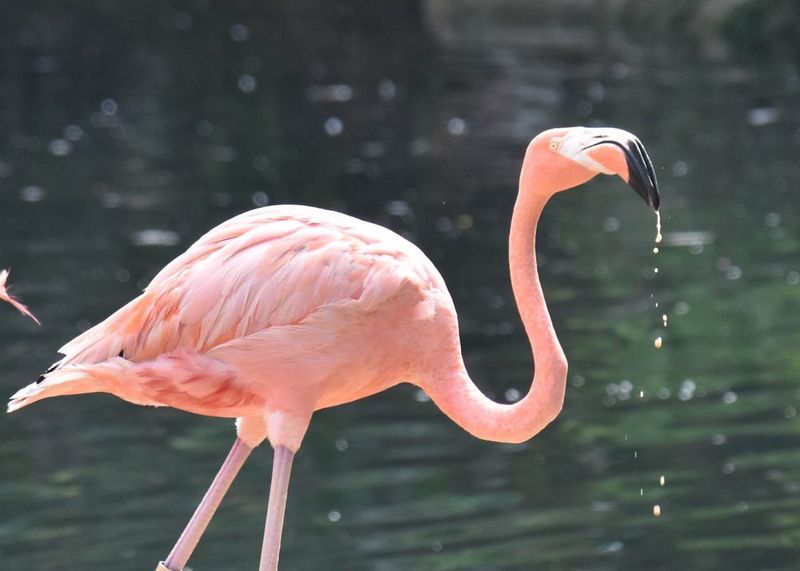
Flamingos are synonymous with vibrant pink. Their striking coloration comes from their diet of carotenoid-rich food sources like algae and shrimp.
These wading birds are often seen in large colonies, painting the landscape with pink. Their elegant necks and synchronized movements are a graceful spectacle.
Beyond their beauty, flamingos play important ecological roles in their habitats, contributing to nutrient cycling.

